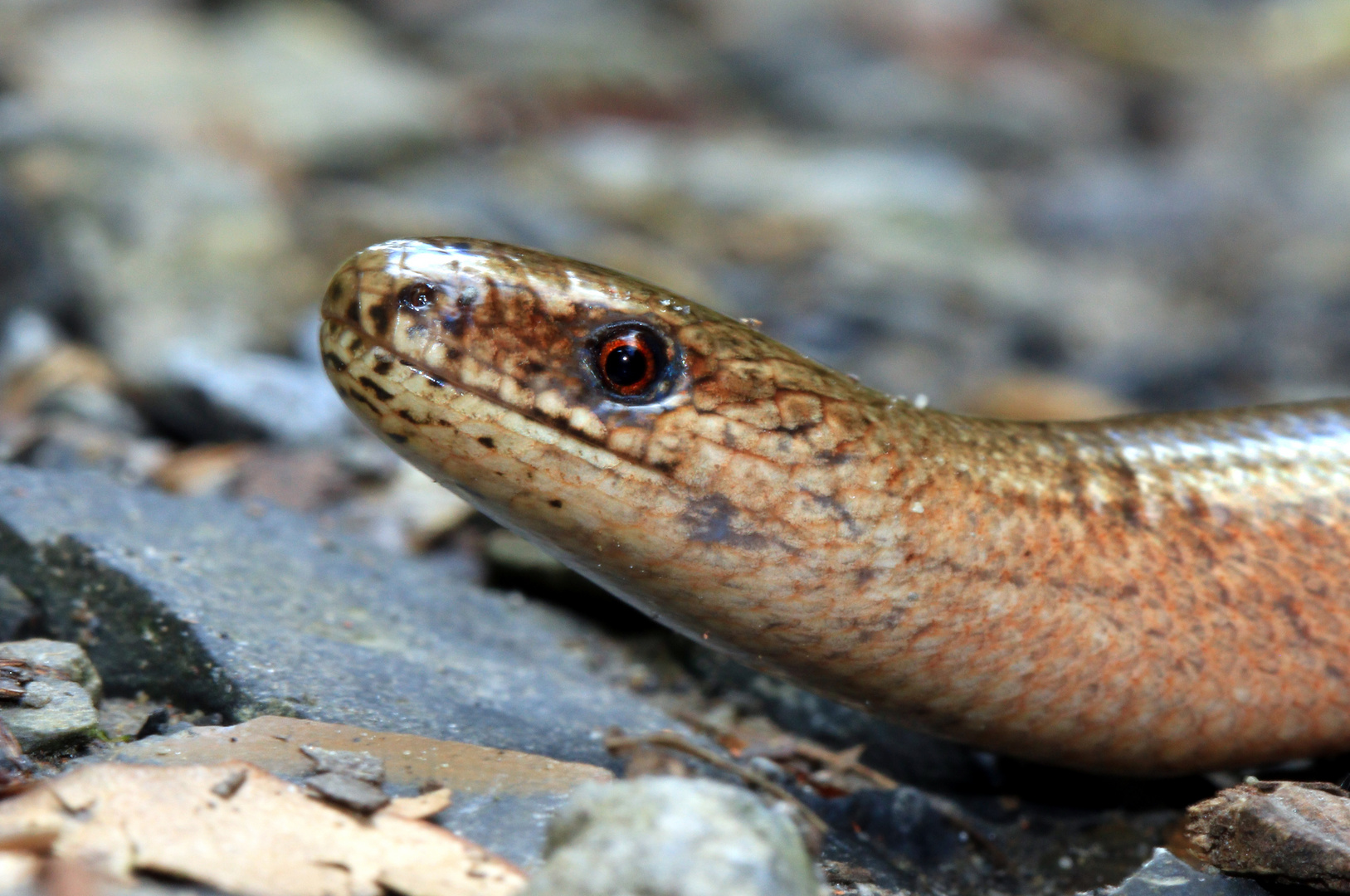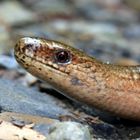Blindschleiche, Anguis fragilis, Reptil des Jahres 2017
Diese Schleiche fand ich beim Sonnenbaden auf einem Waldweg, sie war etwa 30 cm lang. In Bauchlage konnte ich Fotos von ihr machen. Sie war eine Zeit lang recht zutraulich, ehe sie langsam wieder im Unterholz verschwand.
Die Blindschleiche (Anguis fragilis) ist eine Echsenart innerhalb der Familie der Schleichen (Anguidae). Nach neuer Systematik wird sie präziser auch als Westliche Blindschleiche bezeichnet. In Mitteleuropa gehört sie zu den am häufigsten vorkommenden Reptilien. Mit ihrem beinlosen, langgestreckten Körper gleicht sie einer Schlange und wird auch oft für eine solche gehalten. Ein anderer verbreiteter Irrtum ist, dass die Blindschleiche gemäß der Artbezeichnung blind sei. Der deutsche Name wird aber auf das Althochdeutsche plintslîcho zurückgeführt, was nach allgemeiner Auffassung so viel wie „blendender/blinkender Schleicher“ bedeutet und sich auf das Glänzen der glatten Schuppenhaut sowie die typische Fortbewegung beziehen dürfte. Andere, heute nicht oder kaum mehr gebräuchliche Bezeichnungen lauten Haselwurm und Hartwurm.
Anguis fragilis is a reptile native to Eurasia. It is also called a deaf adder, a slowworm, a blindworm, or regionally, a long-cripple, to distinguish it from the Peloponnese slowworm. These legless lizards are also sometimes called common slowworms. The "blind" in blindworm refers to the lizard's small eyes, similar to a blindsnake (although the slowworm's eyes are functional).
Slowworms are semifossorial (burrowing) lizards, spending much of their time hiding underneath objects. The skin of slowworms is smooth with scales that do not overlap one another. Like many other lizards, they autotomize, meaning that they have the ability to shed their tails to escape predators. While the tail regrows, it does not reach its original length. In the UK, they are common in gardens, and can be encouraged to enter and help remove pest insects by placing black plastic or a piece of tin on the ground. On warm days, one or more slowworms can often be found underneath these heat collectors. One of the biggest causes of mortality in slowworms in suburban areas is the domestic cat, against which it has no defence.
Quellen: Wikipedia















Commentaire 0
Supprimer le commentaire
Effacer commentaire et réponses